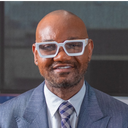Do you have to be an actual Dr./MD to perform the installation of the grafts in a hair transplant surgery?
Answers (10)
From board-certified doctors and trusted medical professionals

Dr. Jae Pak, MD
Hair Restoration Surgeon, Board Certified in Emergency Medicine
Answer

Dr. Sanusi Umar, MD
Dermatologic Surgeon, Board Certified in Dermatology
Answer
Dr. Jeffrey Epstein, MD, FACS
Hair Restoration Surgeon, Board Certified in Facial Plastic Surgery
Answer
Dr. William Rassman, MD (retired)
Hair Restoration Surgeon, Board Certified in General Surgery
Answer
Dr. Francis R. Palmer, III, MD (retired)
Board Certified Facial Plastic Surgeon
Answer
Dr. Sheldon S. Kabaker, MD FACS (retired)
Board Certified Facial Plastic Surgeon
Answer
More Hair Transplant Questions
See all Hair Transplant Q&AWE SEND PRETTY
EMAILS
What’s trending? Who’s turning heads? Which TikTok myths need busting? We’ve got you. No fluff, no gatekeeping—just real talk. Get our free, unfiltered newsletter.


